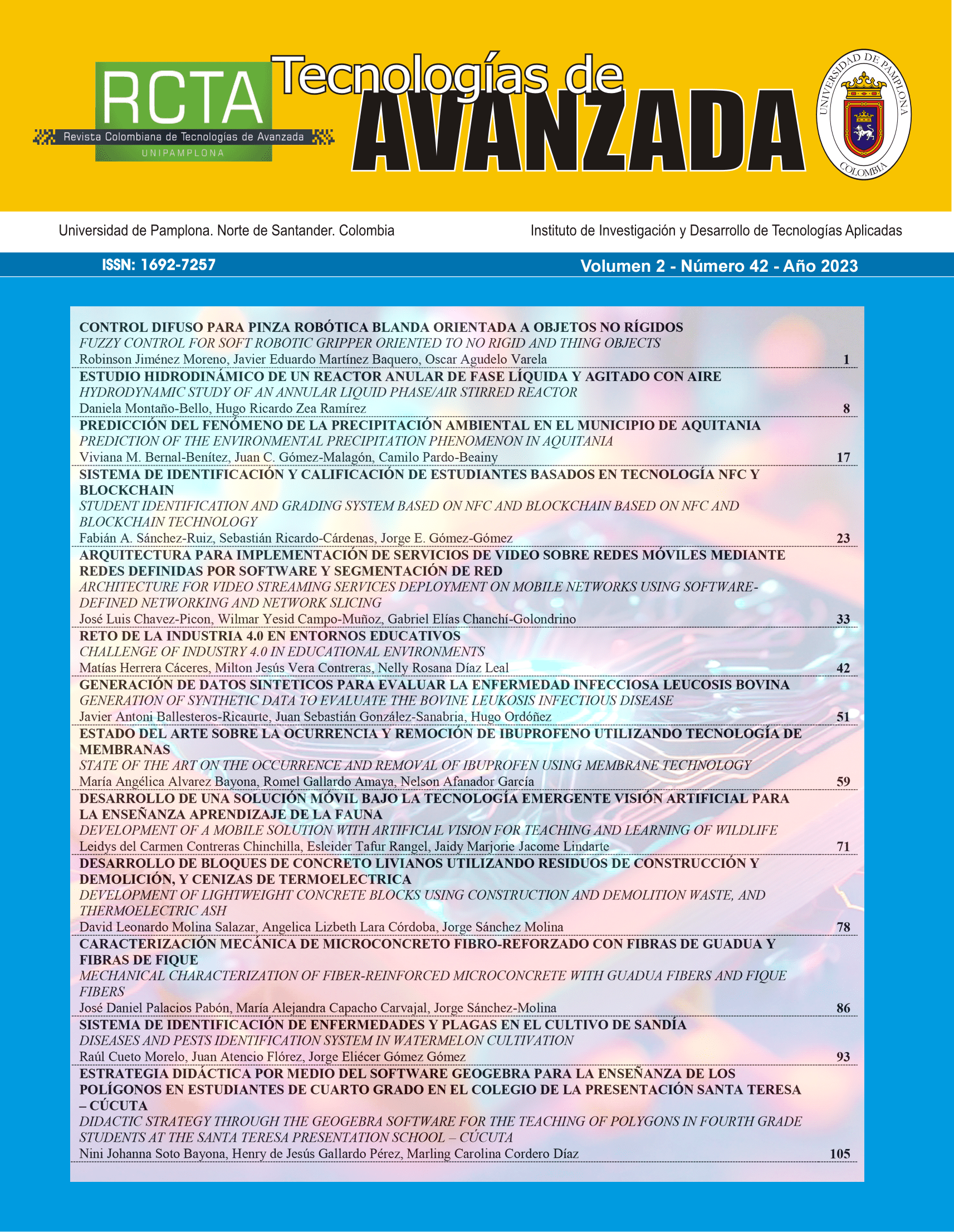DEVELOPMENT OF LIGHTWEIGHT CONCRETE BLOCKS USING CONSTRUCTION AND DEMOLITION WASTE, AND THERMOELECTRIC ASH
DOI:
https://doi.org/10.24054/rcta.v2i42.2672Keywords:
RCD, Recycled concrete, Circular economy, Light concreteAbstract
Construction and demolition waste (RCD) represents a serious global environmental problem, due to its high volume and impact on our environment. This paper shows the manufacture of concrete blocks using RCD, both an ecological and economical option that could minimize the amount of waste that ends up in landfills and reduce the exploitation of new natural materials. In Colombia, especially in the department of Norte de Santander, RCD management poses significant challenges, although efforts are being made to improve its management and promote a circular economy in the construction sector. The goal of this research was to incorporate RCD and ash from thermoelectric plants into the aggregate mix for the manufacture of concrete blocks in the metropolitan area of Cúcuta, in order to promote sustainability in the construction sector and minimize the environmental impact of construction and demolition waste. It is hoped that this study will encourage the use of RCD in the creation of concrete blocks both in Colombia and throughout Latin America.
Downloads
References
Abraham, J. J., Saravanakumar, R., Ebenanjar, P. E., Elango, K. S., Vivek, D., & Anandaraj, S. (2022). An experimental study on concrete block using construction demolition waste and life cycle cost analysis. Materials Today: Proceedings, 60, 1320–1324. https://doi.org/10.1016/j.matpr.2021.09.307
NTC 1776: Método de ensayo para determinar por secado el contenido total de humedad de los agregados, (1994).
NTC 176: Método de ensayo para determinar la densidad y la absorción del agregado grueso, (1995).
NTC 237: Método de ensayo para determinar la densidad y la absorción del agregado fino, (1995).
NTC 4026: Bloques y ladrillos de concreto, para mampostería estructural, (1997).
NTC 4076: Bloques y ladrillos de concreto, para mampostería no estructural interior y chapas de concreto., (1997).
NTC 174: Concretos. Especificaciones de los agregados para concreto., (2000).
NTC 4024: Muestreo y ensayo de prefabricados de concreto no reforzados, vibrocompactados, (2001).
NTC 77: Método de ensayo para el análisis por tamizado de los agregados finos y gruesos, (2018).
Contreras-Llanes, M., Romero, M., Gázquez, M. J., & Bolívar, J. P. (2021). Recycled Aggregates from Construction and Demolition Waste in the Manufacture of Urban Pavements. Materials, 14(21), 6605. https://doi.org/10.3390/ma14216605
Givi, A. N., Rashid, S. A., Aziz, F. N. A. , & Salleh, M. A. M. (2010). Contribution of rice husk ash to the properties of mortar and concrete: a review. Journal of American Science, 6(3), 157–165.
Guarin, A. S., Molina, J. S., & Díaz, J. C. L. (2017). Uso de nutrientes tecnológicos como materia prima en la fabricación de materiales de construcción en el paradigma de la economía circular. Respuestas, 22(1), 6–16.
Leal, C. E. F., Neto, J. C. M., Parsekian, G. A., Christoforo, A. L., & Ferreira, F. G. S. (2022). Technical viability of construction and demolition waste reuse in paving blocks industrial production: an experimental study. International Journal of Masonry Research and Innovation, 7(4), 343. https://doi.org/10.1504/IJMRI.2022.123719
Lotfi, S., Eggimann, M., Wagner, E., Mróz, R., & Deja, J. (2015). Performance of recycled aggregate concrete based on a new concrete recycling technology. Construction and Building Materials, 95, 243–256. https://doi.org/10.1016/j.conbuildmat.2015.07. 021
Ma, W., Wang, Y., Huang, L., Yan, L., & Kasal, B. (2023). Natural and recycled aggregate concrete containing rice husk ash as replacement of cement: Mechanical properties, microstructure, strength model and statistical analysis. Journal of Building Engineering, 66, 105917. https://doi.org/10.1016/j.jobe.2023.105917
Sanchez Molina, J., DÍAZ GARCÍA, J. I., & Sánchez Zúñiga, J. V. (2022). Ingeniería y economía circular-combinación exitosa para la sostenibilidad.
Sharma, H., Sharma, S. K., Ashish, D. K., Adhikary, S. K., & Singh, G. (2023). Effect of various bio-deposition treatment techniques on recycled aggregate and recycled aggregate concrete. Journal of Building Engineering, 66, 105868. https://doi.org/10.1016/j.jobe.2023.105868
Silva, P. B., Ângulo, S. C., Motta, R., & Bernucci, L. L. B. (2023). Pozzolanic Reaction of Recycled Cementitious and Red Ceramic- Waste Aggregates with Hydrated Lime for Pavement Base Layer. Journal of Materials in Civil Engineering, 35(2). https://doi.org/10.1061/(ASCE)MT.1943- 5533.0004579
Wagih, A. M., El-Karmoty, H. Z., Ebid, M., & Okba, S. H. (2013). Recycled construction and demolition concrete waste as aggregate for structural concrete. HBRC Journal, 9(3), 193– 200. https://doi.org/10.1016/j.hbrcj.2013.08.007
Published
Versions
How to Cite
Issue
Section
License
Copyright (c) 2023 REVISTA COLOMBIANA DE TECNOLOGÍAS DE AVANZADA

This work is licensed under a Creative Commons Attribution-NonCommercial 4.0 International License.














